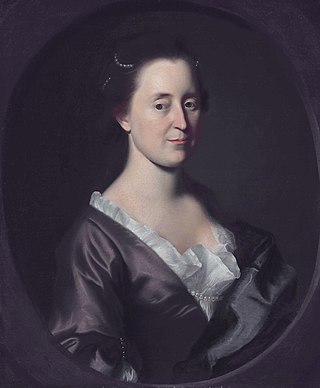Related Research Articles

Each General Assembly of the legislature of the province of Nova Scotia, Canada, consists of one or more sessions and comes to an end upon dissolution and an ensuing general election. Today, the unicameral legislature is made up of two elements: the lieutenant governor and a legislative assembly called the House of Assembly. The legislature was first established in 1758.

Province House in Halifax is where the Nova Scotia legislative assembly, known officially as the Nova Scotia House of Assembly, has met every year since 1819, making it the longest serving legislative building in Canada. The building is Canada's oldest house of government. Standing three storeys tall, the structure is considered one of the finest examples of Palladian architecture in North America.
George Suckling was a lawyer who was appointed to be the first Chief Justice of the British Virgin Islands in 1776. Suckling's appointment was not popular in the islands, which were at the time a notorious haunt for the lawless and for those seeking to evade their creditors elsewhere. He also served as a member of the 1st General Assembly of Nova Scotia from 1758 to 1759 and was the first Attorney General in Quebec, serving under James Murray from 1764 to 1766, when he was removed from office.
A writ for the election of the 2nd General Assembly of Nova Scotia was issued on August 23, 1759. The assembly convened on December 4, 1759, held two sessions, and was dissolved by the death of King George II on October 25, 1760.
A writ for the election of the 3rd General Assembly of Nova Scotia was issued on February 28, 1761. The assembly convened on July 1, 1761, held six sessions, and was dissolved on January 30, 1765.
A series of writs for the election of the 4th General Assembly of Nova Scotia were issued February 2-19, 1765, returnable by March 13, 1765. The assembly convened on May 28, 1765, held eight sessions, and was dissolved on April 2, 1770.
The 5th General Assembly of Nova Scotia represented Nova Scotia between May 1770 to 1784, its membership being set in the 1770 Nova Scotia general election.
The 6th General Assembly of Nova Scotia represented Nova Scotia between November 1785 to 1793.
A writ for the election of the 7th General Assembly of Nova Scotia was issued on Jan. 22, 1793, returnable by March 20, 1793. The assembly convened on March 20, 1793, held seven sessions, and was dissolved on October 11, 1799.
A writ for the election of the 8th General Assembly of Nova Scotia was issued on October 21, 1799, returnable by December 23, 1799. The assembly convened on February 20, 1800, held six sessions, and was dissolved on May 28, 1806.
A writ for the election of the 9th General Assembly of Nova Scotia was issued 29 May 1806, returnable 7 Aug. 1806. It convened on 18 November 1806 and held seven sessions. It was dissolved on 14 August 1811.
A writ for the election of the 10th General Assembly of Nova Scotia was issued Aug. 17, 1811. It convened on February 6, 1812 and held eight sessions. It was dissolved on May 11, 1818.

Benjamin Gerrish was a merchant and political figure in Nova Scotia. He was a member of the Nova Scotia House of Assembly from 1759 to 1768.
Philip Augustus Knaut was a German-born merchant and political figure in Nova Scotia. He was a member of the 1st to 5th Nova Scotia House of Assembly from 1758 to 1781, representing Lunenburg.
Sebastian Zouberbuhler was one of the founding fathers of Lunenburg, Nova Scotia.
Archibald Hinshelwood was a lawyer, merchant and political figure in Nova Scotia. He briefly sat on the 1st General Assembly of Nova Scotia in April 1759, but his election was disputed. He was a member of subsequent assemblies from 1759 to 1773, representing Lunenburg County from 1761 to 1765 and from 1770 to 1773, and Lunenburg Township from 1765 to 1770. His name also appears as Hinchelwood.
Robert Sanderson was a merchant, ship owner and political figure in Nova Scotia. He was a member of the 1st General Assembly of Nova Scotia.
John Newton was a surveyor, official and political figure in Nova Scotia. He served as a member of the 2nd General Assembly of Nova Scotia for Annapolis Township and then represented Halifax County from 1770 to 1772 and Lunenburg County 1775–1785.

Formally known as "His Majesty's Council of Nova Scotia", the Nova Scotia Council (1720–1838) was the original British administrative, legislative and judicial body in Nova Scotia. The Nova Scotia Council was also known as the Annapolis Council and the Halifax Council. After 1749, when the judicial courts were established, the Nova Scotia Council was limited to administrative and legislative powers.

The Lunenburg campaign was executed by the Mi'kmaq militia and Acadian militia against the Foreign Protestants who the British had settled on the Lunenburg Peninsula during the French and Indian War. The British deployed Joseph Gorham and his Rangers along with Captain Rudolf Faesch and regular troops of the 60th Regiment of Foot to defend Lunenburg. The campaign was so successful, by November 1758, the members of the House of Assembly for Lunenburg stated "they received no benefit from His Majesty's Troops or Rangers" and required more protection.
References
- ↑ "Proclamation" (PDF). Nova Scotia Legislature. Province of Nova–Scotia. May 20, 1758.
- Democracy 250 : Celebrating 250 Years of Parliamentary Democracy in Canada
- A Directory of the Members of the Legislative Assembly of Nova Scotia, 1758–1958, Public Archives of Nova Scotia (1958)
- Elliott, Shirley B. (1984). "Appendix A: Assembly Lists". The Legislative Assembly of Nova Scotia, 1758-1983: a biographical directory (PDF). Halifax: Province of Nova Scotia. p. 242. ISBN 0-88871-050-X.